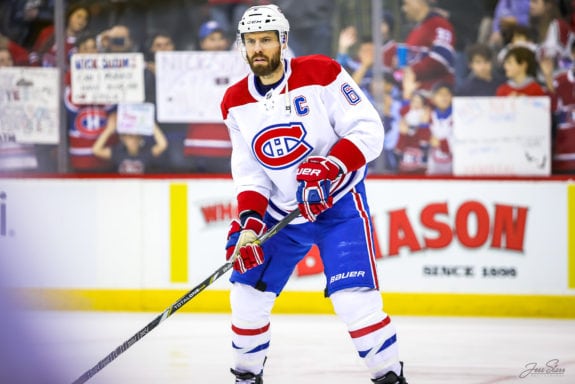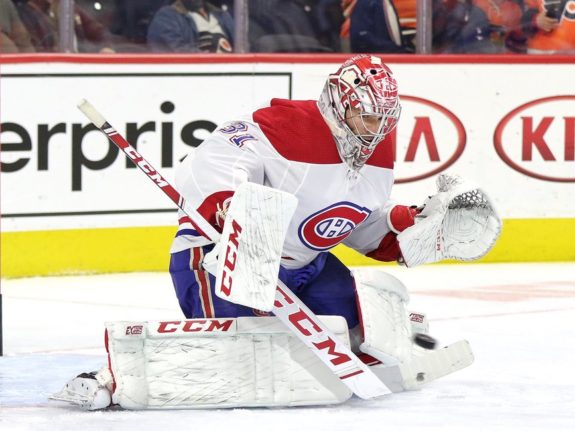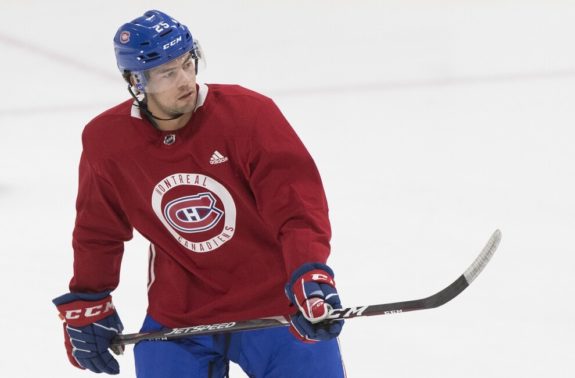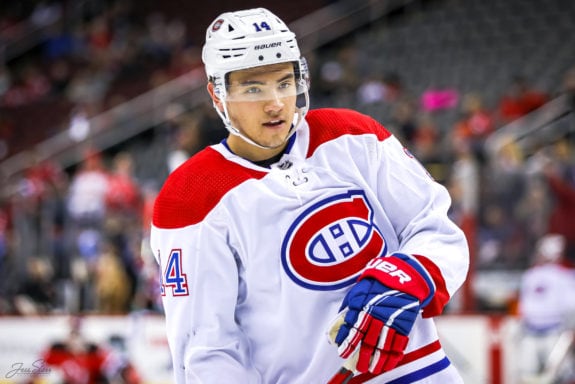The Montreal Canadiens entered the 2021-22 season facing a myriad of changes — the loss of their captain Shea Weber to injury, players leaving through free agency, Carey Price showing courage and seeking help, taking a step back from the team for a minimum of 30 days. All of it has left the Canadiens with the unexpected task of discovering who they are without the players that used to form the pillars of their core group.

Teams have an identity; the Colorado Avalanche are known for their high skill and speed. The Boston Bruins play “the Bruins way,” meaning a hard-nosed, tight-checking style exemplified by Patrice Bergeron. These are just two examples of a long list of teams that have chosen an overall identity for their organization and then built around it, hiring a staff that buys into the philosophy, who then draft, develop, sign free agents and build systems that then fall in line with that plan. By choosing pieces that fit the puzzle instead of trying to find a puzzle that fits the pieces, they are able to become consistent contenders.
Related: Canadiens Passing Torch to Young Core
As the organization begins its transition to a new, more youthful core group, the question is, who are this season’s Canadiens? What is their identity? It used to be “Firewagon Hockey,” a term used to describe a game based on speed, but this edition hasn’t found its identity yet.
Past Canadiens Identity
To know who they are, they have to look back at who they were. It is true that the team used to be one based on speed. Yet, over the last few years, in part due to the retool, the Canadiens have been heavily reliant on the play of Price and Weber to shield the team from errors. Their play defensively and in net minimized the goals against and allowed the team to remain competitive.
Instead of building a team around a common philosophy, former head coach Claude Julien built a system based on the players he had available. He created a system that relied on a team collapsing towards the net, forcing shots from outside a perimeter, and then taking advantage of any error to go up ice and create a high volume of shots on net to generate offence.

It was a team built on opportunistic play and hard work. For those who watched the NHL in the 1990s, they would recognize this style of play. By adding some veteran pieces, and the improved play of some key youth, the team was able to play its style to near perfection in the 2021 playoffs, proving that the old-school playoff style is still capable of being successful. However, that assumes that style can consistently qualify for the playoffs.
Down on the Farm
Like most organizations, the Canadiens’ American Hockey League (AHL) affiliate uses the same systems as the NHL club. This is done to acclimatize the players developing with the team to be able to get comfortable when they get the call to step up into the NHL, setting them up for success.
The Laval Rocket have started their season off and have been able to play large stretches of games where they dominated. So, that leaves the question, what is the difference between the two teams? Personnel management is the answer. Head coach JF Houle has chosen to rely heavily on the young talent at his disposal, such as Ryan Poehling, mainly as it is a development league, and that is his main role, to develop the next generation of NHL talent for the Canadiens.

The Rocket special teams, for instance, play essentially the same system the Canadiens use, but they are much more aggressive in their play. Aggressively pressuring the puck carrier while on defence or quickly executing a passing play to generate a shot on goal while on offence. Speed of execution, the pace of the game, and the work ethic are at a high level with Laval — their identity is that of a persistent opponent that attacks the net. However, it is done using the most skilled assets on the roster, which tends to provide better results as talent can find opportunity when given a chance, and the work involved in playing that style creates those chances.
Habs Must Choose Their Identity
Like in the playoffs, a team isn’t in trouble until they lose a home game. And now, with a loss in their home opener and a record of 0-3, the Canadiens are in trouble.
Head coach Dominique Ducharme is facing a dilemma beyond what systems to employ; he is having to decide between trusting his youth or his veterans. It’s a dilemma Habs fans are familiar with seeing from their coaching staff. His choice for a team identity becomes a decision in choosing a more open skill-based style or based on sheer work ethic and predictability.
The veterans are a known quantity. Ducharme can trust in their consistency, as he can reasonably predict what they will provide from shift to shift. The problem is, with a couple of exceptions, that most of the veterans on the Canadiens lack the mobility and skill to take control of a game. Meanwhile, the youth on the roster, led by top center Nick Suzuki, have the skill and mobility but lack the experience to provide the consistency shift to shift that matches their skill sets.

As an example, Cole Caufield. He has speed, mobility and the potential to be a game-breaking talent. However, Ducharme has relegated him to a secondary power play (PP) unit, instead deferring to players like Matthieu Perreault to fill in on a top unit. It’s clear that Perrault lacks Caufield’s shooting skills and ability to find open ice, yet he can be relied on to play in a predictable manner. On the PP, that is the problem; defences can game plan too easily for predictability. Meanwhile, in the few minutes of PP time that Caufield has had, despite defences planning on shadowing him, he has found open areas to shoot from. Unfortunately, the PP for the Canadiens hasn’t been effective at moving the puck, which is another issue entirely.
The Identity Needed
In the modern NHL, a team must be a hybrid, capable of playing that older more physical, static playoff style, but they must also be able to play the more mobile, speed game. So far in the early going this season, the Canadiens don’t exhibit that ability. This has much to do with two main reasons: the lack of mobility on defence, and it’s compounded by an overreliance on the veterans who are less skilled than the faster, more mobile youth.
Because of this, Ducharme and the Canadiens are at a crossroads early this season. The team is unable to execute because of a lack of an adjustment period to build a new team dynamic. But it’s also due to a lack of trust in the team’s players that have the mobility and skill to counterattack. For the Canadiens to find success, they will need to do as the Rocket have done: find a balance between its younger core and its veterans. Ducharme will need to place his trust in his youth, giving them the leeway to be creative to allow their skills to open up opportunities. This also comes at a cost; mistakes may occur, and he will need to forgive them and coach them out of any poor habits, but that takes time.
The Canadiens found success in the playoffs last season because they were able to create a counterattack. Until Joel Edmundson can return to the lineup, the defence will need to be balanced between stay-at-home types like Ben Chiarot along with the mobile defenders such as Alexander Romanov.
“We know we’re better than this offensively and we’ll do that,”
Canadiens head coach Dominique Ducharme (Stu Cowan: Memories of playoff run quickly washed away, Stu Cowan, Montreal Gazette, 17 Oct 2021)
The good news is Ducharme is right; they can be better. The Canadiens did improve their possession stats dramatically in the home opener versus the New York Rangers, owning a strong expected goals for (xGF%) of 63.9 percent, while the first two games were well below 40 percent. The bad news, the inability to finish the few high-danger chances for, can haunt a team. This begs for adjustments at forward to allow more ice time to higher-skilled players, especially on the PP. Until Ducharme can trust in his top skilled players and they can begin to produce, the Canadiens will never be able to build upon a successful team identity.
The Canadiens’ identity must be based on their team speed and tireless puck pursuit. Even if this season ends up as a non-playoff year, the Habs need to build on a return to “Firewagon Hockey” as their team identity to set up future success.
